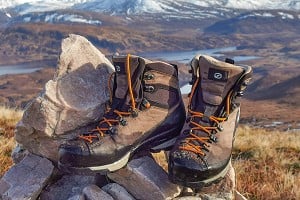
Over the years I've tried several brands of outdoor footwear, but you develop a loyalty to what fits best, and for me Scarpa are old faithfuls. When asked if I'd like to review a pair of the new women's Mescalito TRK GTX, I was like, 'Heck yeah!'. But in order to write a fair and honest review I wanted to rack up a reasonable amount of mileage over a variety of terrain, and in differing weather conditions, before declaring undying love for these boots.
Who and what are they for?
Made for hillwalkers and trekkers, the design of these 3-season boots is based on the popular Mescalito Mid – a technical mid-cut approach shoe. Scarpa say they have taken some of the characteristics of the shoe - namely the all round rand and lacing all the way to the toe - and combined these with 'cutting edge' hiking boot technology to create a boot designed for long hikes and demanding conditions. I also have the mid-cut approach shoes, which have lasted well, and yep, the boots are indeed a souped-up version – they offer similar durability and good traction, but with ankle support which provides more stability when carrying a full camping pack.
Fit
I've got the women's version; there's also a men's/higher volume boot. As an Italian brand Scarpa do tend to have a narrower fit, especially when compared with US brands like Merrell.
The Women's Scarpa Mescalito TRK GTX boots range in size from UK 3.5 – 8. I'm kind of between sizes and my feet are quite narrow so when it comes to walking boots Scarpa often prove the best of brands for me. I find the heel cups on the Mescalitos grip firmly, which means less slippage when going up and down hills, and, crucially, there's enough room for movement at the toes – you don't want your toes to be pushing against the ends of the boot on descent as it causes all kinds of hell. I removed the skinny insoles and inserted slightly thicker orthotic ones, making the boots better cushioned and a better fit.
Decent boots aren't cheap, and a good fit is vital so it's important you get it right. It's never a good idea to buy online unless you've tried a model on in a shop first. Most decent outdoor retail outlets have boot fitters who will keep you right, and the best places have mock rocky trails to go up and down so you get more of a sense of how the boots feel.
Upper
The upper of the Mescalito is made from 1.8mm Perwanger suede, which is lighter and more easily broken in than full grain leather. Perwanger is a finer suede leather that is robust, hard-wearing, and has excellent breathability. It's naturally water repellent, and so far my boots have kept out the wet stuff - and that's after many outings that have involved rainfall of biblical proportion, bog schlurping and a couple of shallow river crossings.
If you do eventually want to use a re-proofer, use only water or silicone based products. My boots get treated like they're in a war zone, but the leather upper is resisting scuffs and abrasion well. What I also particularly like about the design is the generous wraparound rand; the extra protection for vulnerable areas around and over my toes and heels gives me an added confidence when I'm out on big mountain days. The padded ankle collar gives support, and the inner lining – with Gore-Tex membrane – adds extra comfort and warmth.
The tongue is gusseted which gives protection from water and tiny stones getting in (but tiny stones always find their way in, and bits of heather that feel like spears). The two-zone lacing system extends down low (much like a climbing shoe) and allows you to adjust the tension at the toes and instep, achieving a better and more secure fit over the forefoot than with other styles.
Weight
My UK size sevens weigh 1236g for the pair (Scarpa say 1090g/pair size 38). For comparison, my Mescalito Mid Approach shoes are 762g, the Scarpa Rush are 816g, Terra II GTX boots are 1450g, and my winter Charmoz boots 1446g. My own assessment of what the weight means is this: the shoes are robust, but not as stable and sturdy; the Rush are super comfortable, but not as durable; the Terra II are sturdy, very water-resistant, with great traction and comfortably handle consecutive mountain days; my Charmoz are stiffer and still need a bit of breaking in so can't really say more about them at this stage. In short, the weight of Mescalito TRK GTX seems about right for a pair of 3-season suede boots.
Sole
Underfoot you get plenty of support, courtesy of a fairly chunky sole. Vibram is widely accepted as the gold standard across the industry, and the XS TREK EVO outsole used here seems to offer a sensible balance of grip versus durability. While not massively chunky, the lugs are aggressive enough to bite into soft, wet ground (essential in a boot for UK use, of course), and they're well spaced to help prevent them getting too clogged with mud and small stones while walking. There's also a decent ledge at the heel for downhill braking.
On Test
New boots can potentially mean rubbing and blisters, so off I went on a short two hour walk, on a good track up a local hill, to break the Mescalitos in gently. There was some rubbing and I noticed tenderness on the back of my heels as I made my return, and was glad I hadn't been my usual impatient self – disappearing off on some mammoth hike to the arse end of nowhere only to discover the development of whopping blisters I could do nothing about (because obviously I wouldn't have any Compeed). The following week off I skipped, with my pal, to Arran for a summit camp on the Island's four Corbetts, preemptive blister plasters neatly adhered.
It was meant to have been dry with negligible wind, but in reality, we were blown about like a pair of ragdolls and subject to seemingly unending horizontal rain; but despite all that the boots did well. My feet remained toasty, comfortable and dry. It was a pity the same couldn't be said for my backpack and its contents (the only waterproof cover I had for it was a black binbag I'd nicked out the kitchen of the lodge we'd stayed at the previous night and, needless to say, between the wind, and scrambling between rocks, it was rapidly shredded). Unlike the binbag (and my MSR tent, but that's another review), the Mescalitos did well on the rockier scrambling sections of our route, the decent rand held up to a fair bit of abuse and the Vibram sole provided good traction even when scree and rocky surfaces got very wet.
The Vibram soles are stiffer than the Scarpa Rush mid-gtx boots I've been cutting about in all summer – a flare up of plantar fasciitis in both feet was testament to that and by the end of the Arran trip I was desperate to get the boots off my feet, but a simple fix was to remove the insoles and replace them with orthotic ones.
The Mescalitos have performed as well on rocky ridges as well as they have done over mountains with uber rough, pathless, boggy terrain. Water resistance doesn't last forever, but I've clocked up around seventy miles in these bad boys, and so far so bueno – and, unlike their owner, the boots are not falling apart at the seams – good, solid stitching in the upper fabric of the boots and no fraying around the top of the tongue. The collar is flexible and well padded giving a feel, like the gusseted tongue, of comfort and warmth – and because of the Gore-Tex membrane this part of the boot, though it did get a proper soaking, still kept my feet dry.
Summary
After swapping out the insole I find these boots more comfortable, but I still feel that desperation to get them off my feet after carrying a full camping pack for a couple of days. Perhaps that's just in the nature of a stiffer leather walking boot. For me sizing is perfect, and they should suit those with narrower feet particularly well. While these boots don't feel particularly heavy, they still give very good stability on rough ground. Robustly made, they're still in good shape despite what I've put them through so far. I'm also very happy with how they continue to keep my feet dry. Retailing at £235 they are quite pricey, but ye ken what they say, 'buy cheap, buy twice...'

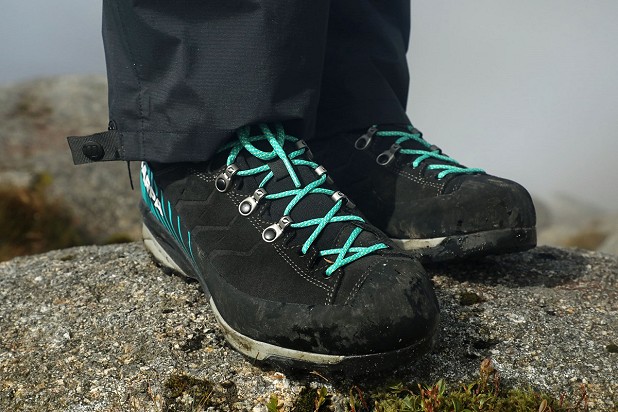
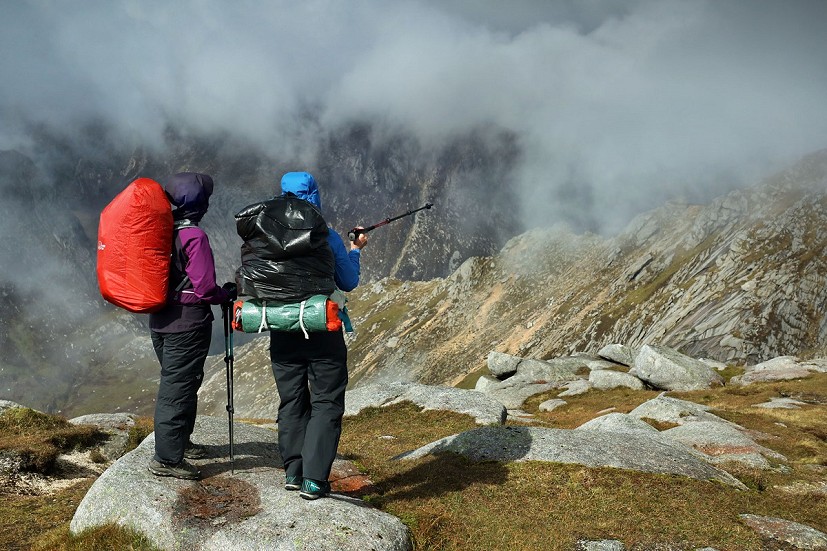

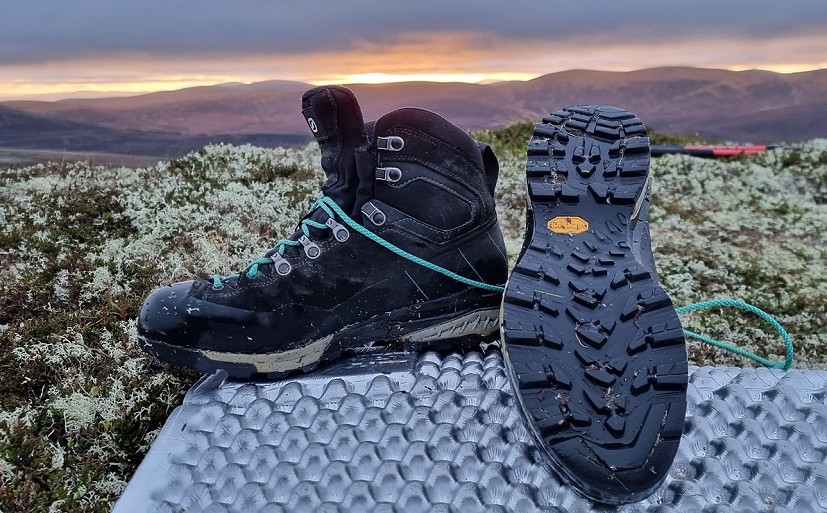
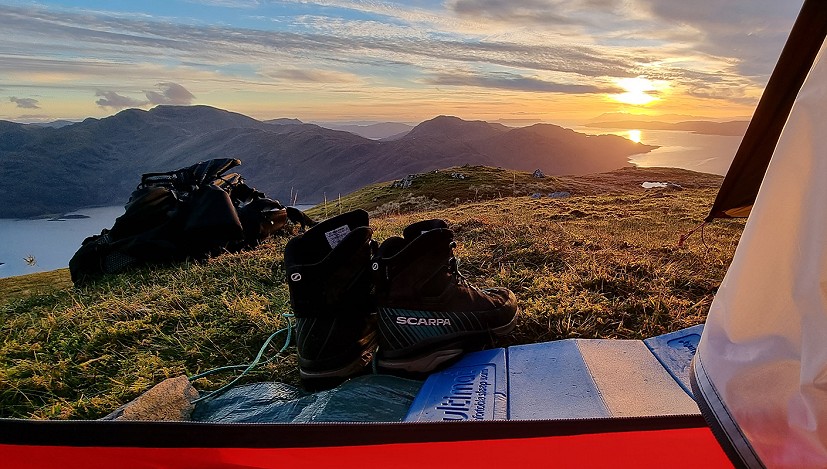

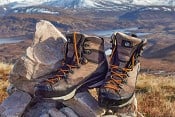
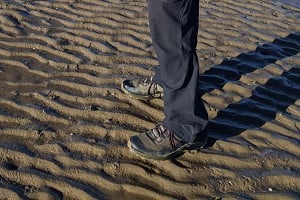
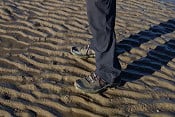
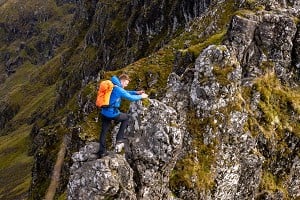

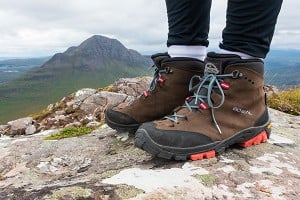
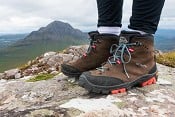
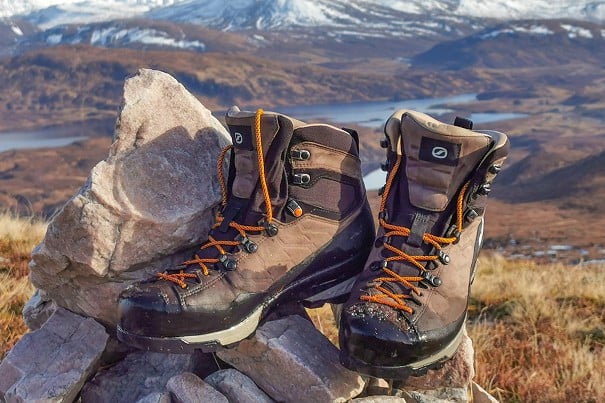
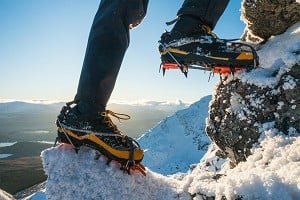

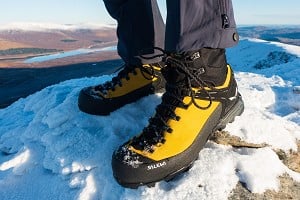
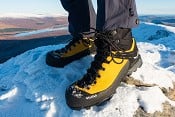
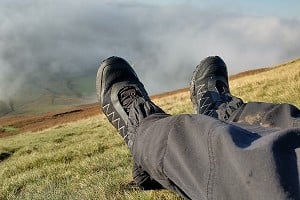
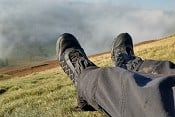
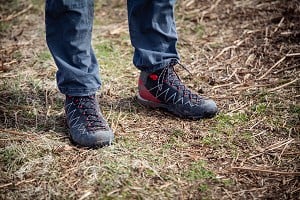

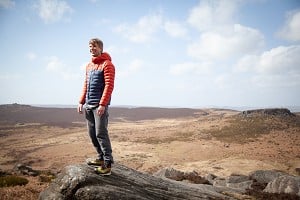

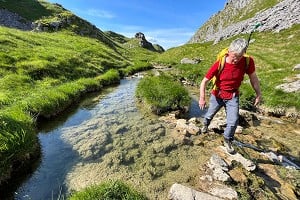
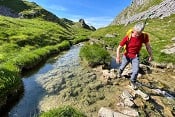


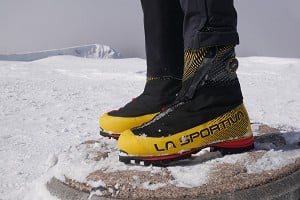
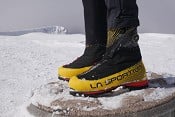
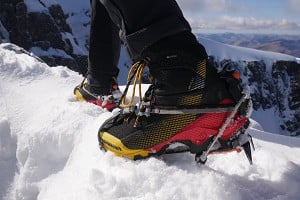
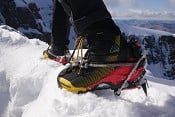
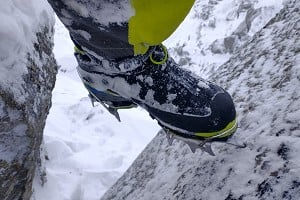
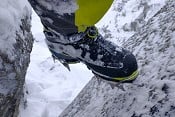
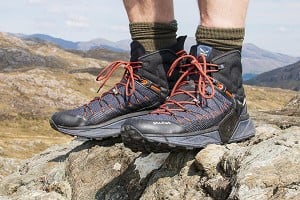
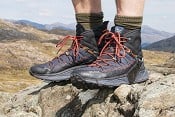
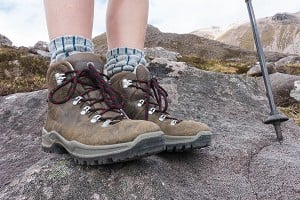
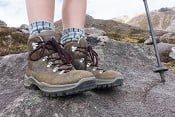



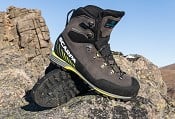
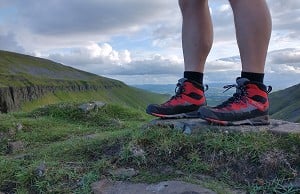
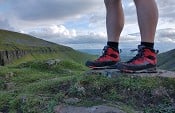
Comments
Thanks for the write-up Sarah; I was looking into these exact boots for summer multi-day hiking.
You mentioned they're breathable, but how would you rate them for warm summer use? I have quite warm feet and I want something supportive that I can use in warm weather (I have Marmolada Pros which are very warm, for winter use).